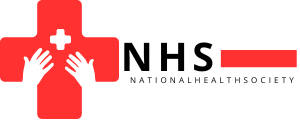wha is bls
BLS can stand for different things depending on the context. Some common meanings include:
-
Basic Life Support (BLS) – Emergency medical care techniques like CPR (cardiopulmonary resuscitation) used to help someone in a life-threatening situation.
-
Bureau of Labor Statistics (BLS) – A U.S. government agency that provides economic data, including employment, wages, and inflation.
-
BLS Certification – A qualification for healthcare providers and first responders in emergency medical care.
Basic Life Support (BLS) plays a crucial role in healthcare by providing immediate care in life-threatening situations before advanced medical help arrives. Here’s how it contributes to patient care:
1. Emergency Response & Life-Saving Measures
-
CPR (Cardiopulmonary Resuscitation) – Helps maintain circulation and oxygen supply to vital organs during cardiac arrest.
-
AED (Automated External Defibrillator) Use – Delivers an electric shock to restart the heart in cases of sudden cardiac arrest.
-
Choking Relief (Heimlich Maneuver) – Clears airway obstructions to prevent suffocation.
2. First Responder & Pre-Hospital Care
-
BLS-trained healthcare workers (EMTs, nurses, doctors, and even non-medical personnel) provide immediate care before a patient reaches the hospital.
-
Helps stabilize patients in emergencies such as heart attacks, strokes, or respiratory distress.
3. Workplace & Community Health
-
Many jobs (like in healthcare, schools, and public service) require BLS certification to ensure employees can assist in emergencies.
-
Increases survival rates for victims of cardiac arrest or severe trauma in workplaces and public spaces.
4. Bridge to Advanced Medical Care
-
BLS ensures that patients have the best possible chance of survival until they receive advanced medical treatment from paramedics or hospital staff.





